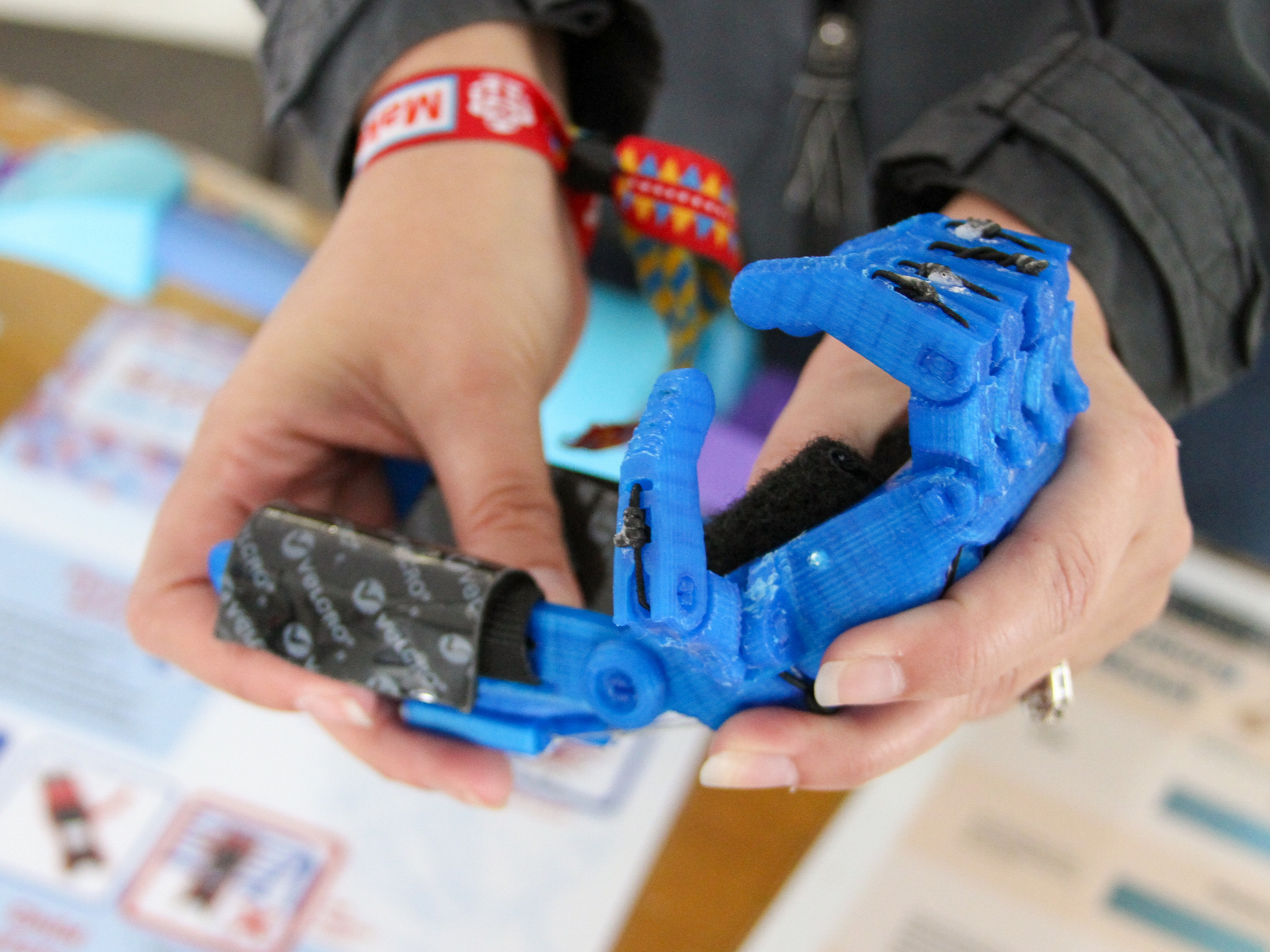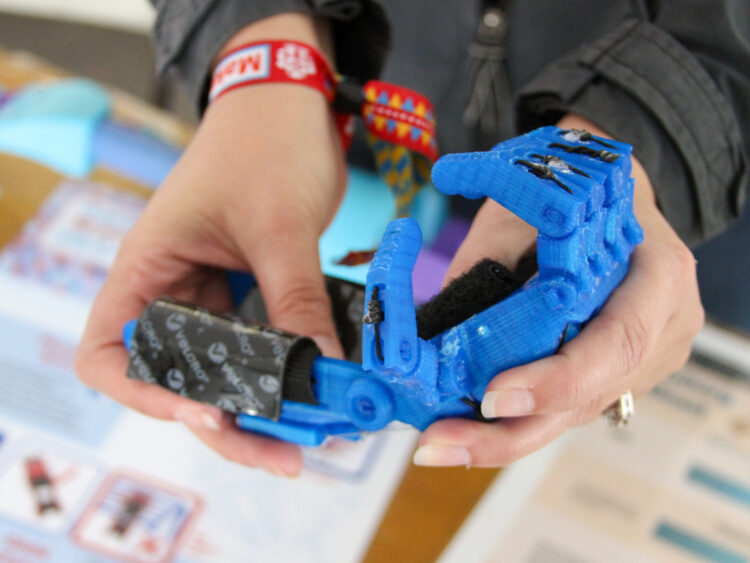
Two years ago, I invested in Ekso Bionics, and did well on their public offering. I shared my excitement of seeing a person walk again using their technology with a close friend. She then reminded me her son is a quadriplegic and would be unable to use an exoskeleton. I realized then that the key to the next wave of assistive robots is the hand, which is a thousand times more complicated than legs (see past post).
I recall that earlier this year, NASA launched a RoboGlove in partnership with GM that helps assembly line workers increase dexterity and hand strength. Could this be used and expanded to increase upper-body strength for our most vulnerable citizens? Maybe…
The Columbia Spectator reported this week that one of their labs, in partnership with the National Institute of Health developed “MyHand,” a biomechanical aid for stroke recovery. The device mimics the muscles and tendons used in extension and flexion of the hand. Nearly 800,000 people suffer from strokes every year, making it the leading cause of long-term disability in the US. Strokes can often lead to impaired hand function due to loss of blood flow in areas of the brain.
To help address this issue, rehabilitation and regenerative medicine professor Joel Stein and mechanical engineering professor Matei Ciocarlie are combining their respective expertise in medicine and robotics to create MyHand, a glove-like device that aims to rehabilitate stroke survivors who have lost function in their hands.
The glove, currently in its prototype stage, is being funded by a Columbia-Coulter research partnership and a National Science Foundation award. Ciocarlie was also recently a recipient of the Sloan Research Fellowship, an award that commends early-career scientists and provides grant money to further their research.
Traditionally, stroke survivors with impaired hand function have turned to physical therapists to help them regain hand function. However, limited therapy resources and failure to exercise enough often pose major challenges to full recovery.
MyHand seeks to overcome those challenges by assisting stroke survivors with their rehabilitation exercises and overall hand motion. Stein and Ciocarlie’s device is a portable, lightweight glove that uses artificial tendons to assist the user’s hand movement by helping them make grasping motions and other hand movements that would otherwise be difficult or impossible.
The hope is that MyHand will speed up recovery time by allowing people to do more exercises on their own, in their own time.
“If the task is to pick up objects … and you can’t actually pick them up quickly, you’ll get frustrated and call it a day,” Stein said. “But a device that can help you complete the task then gives you reason to keep at it and keep practicing—and hopefully, ultimately, not need the device.”
To successfully aid stroke survivors in these everyday tasks, MyHand must be both versatile and wearable. From an engineering perspective, the device must assist the many joints and digits of the hand while using very few motors to reduce weight and clunkiness.
“You don’t want a big, massive device that, you know, somebody sits down next to and then gets hooked up to,” Ciocarlie said. “You want something that the person can use in their kitchen, or in their living room.”
Currently, Stein and Ciocarlie are testing their prototypes on patients at the Columbia University Medical Center. There, the researchers are troubleshooting potential issues, such as correctly positioning the glove on the wrist and making sure the patient can take the glove on and off.
Stein and Ciocarlie are also working to find the target population that would best benefit from the device. Those with hand impairment often exhibit different levels of impediment brought upon by their stroke, ranging from slightly slowed movements to complete immobility.
“There’s a sweet spot in terms of this type of technology. Some people don’t need it, some people can’t benefit from it, and some people can’t really tolerate it, or it’s too difficult for them to use,” Stein said. “To try to find the best population, the most targeted, the most likely to benefit population, is part of what we’ve been working on.”
Though MyHand is still in its prototype stage, both Stein and Ciocarlie discussed the untapped potential that such collaborations between engineering and medicine stand to offer.
“It’s interesting—it’s a good, deep problem to work on,” Ciocarlie said. “We won’t run out of scientific challenges anytime soon.”
Across the ocean, researchers at the University of Hertfordshire in the United Kingdom have been working on a robotic glove for stroke patients as well. Their robotic gloves are fitted with sensors that allow patients’ progress to be monitored and assessed. The gloves are also connected to a series of games that hope to improve patient movement and strength. The devices are part of a research project that involved 30 patients and has lasted three years.
In fact, when one does a cursory search for “robotic gloves” on YouTube, there are at least 10 different competing medical projects online. This is in addition to the hundreds of academic papers on biomechanical arms. So I am hopeful that one day soon I will be investing in a technology to empower quadriplegics, like my friend’s son, to walk again.
Image credit: CC by Lenore Edman



